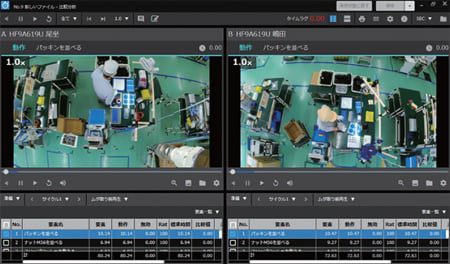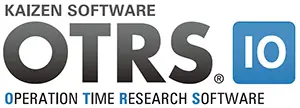OTRS Work Analysis Software Case Study
SUNAQUA TOTO Ltd. | Improvement of shop floor motivation through the visualization of issues and accomplished results.




Industry: Manufacturing


Employees: 145+


Revenue: 2.2 billion yen
※1:Current as of 1 April ※2:FY 2017
Company: SUNAQUA TOTO Ltd.
Established: February 1993
Address: 1-2-1 Maigaoka, Kokura Minami, Kitakyushu, Fukuoka
Business Description:
- Assembly of water faucets and plumbing parts
- Development of instruction manuals (DTP)
- Creation of CAD drawings
- Other affiliated works (scanning, data entries etc.)


Issue
Despite variations in work being identified, no effective solutions were at hand
Outcome
Cost reduction of 70,000 yen/month has been achieved through application of work analysis software and the establishment of standard work using OTRS
Introduction background
Not enough resources for analyzing variations in work and implementing improvement solutions based on work analysis software
SUNAQUA TOTO was established in 1993 as a special subsidiary company operated by a third sector funded by Fukuoka Prefecture, Kitakyushu City and TOTO. There are currently 93 workers with disabilities working for the company (of whom 47 are severely disabled), which accounts for approximately two-thirds of the company’s entire workforce (as of April 2018).
There are approximately 60 operators working in the SUNAQUA TOTO Assembly Section at any time. This is where their main products such as faucets and plumbing parts are manufactured.


On the shop floor, they have paper-based work instructions. However, their instruction documents only capture a few important procedures and not all work sequences are recorded. As a result, there were fluctuations in operators’ operation time as every operator had slightly different movements and postures. As this was the case, the company wanted to conduct a quantitative analysis of their existing operational situation to implement improvements. However, they found it difficult to take a first step. It would have taken them considerable time and effort if they had to conduct an in-depth work analysis of their operators’ movements through naked-eye inspections.
“Based on the concept of normalization, we ask every worker to be involved in our production and operational improvements. “ – Shunsuke Tomoi, Section Chief, Assembly Section, Assembly Division, Manufacturing Department
Why OTRS Work Analysis Software was selected
Seeing the benefits of OTRS and improvement effects achieved in another special subsidiary company like theirs was the deciding factor
When they were facing such challenges, one of their customers, a special subsidiary company of a major home electronics manufacturer that also hires many workers with disabilities just like SUNAQUA TOTO, suggested them to try out OTRS work analysis software. They have been using OTRS and have been achieving great improvement effects. In addition to their customer’s recommendation, OTRS demonstrations gave SUNAQUA TOTO the sense of assurance for achieving their objectives. Having easy access to extensive know-how and full support from the vendor was also one of the deciding factors.
“Our Production Engineering Section was already carrying out a number of different tasks with a limited number of resources from design work to operational improvements. For this reason, they did not think they could afford enough time to analyze recorded footage of operations. However, seeing the case study and the improvement effects of another special subsidiary company like ours motivated us to introduce the software. “ – Shunsuke Tomoi
Tomoi says he also found its many features and easy operability appealing.
“During the demonstrations, the vendor provided easy-to-follow instructions whenever I asked them about how to carry out what I wished to achieve. I had a sense of assurance and confidence that we would receive good support from the vendor after we purchased the software.” – Shunsuke Tomoi
Introduction process
Comparison videos and real data brought improvements to the shop floor
Following the software demonstrations, SUNAQUA TOTO introduced OTRS in April 2018. To start with, they decided to first conduct a current work analysis of their toiletry parts packaging area in May (where materials such as packing, bolts and nuts are put into plastic bags). Out of seven operators working in this area, three operators were video-recorded and their work was analyzed and compared for each process.
“Each operator had a slightly different approach to their work. As a result, there was a big gap in their work cycle time (average of 4 to 5 cycles) between the best cycle time of 42 seconds, and the worst which took over 70 seconds.” – Yoshimi Hirohata, Assembly Section, Assembly Division, Manufacturing Department
On the work analysis reports created in Excel, the name of the fastest operator in each process was written in red. Comments around the secrets of the fastest work were also noted and highlighted in yellow. In addition to this, videos comparing the work of the operators with the best and worst cycle times were shown side by side on OTRS to provide feedback to operators. Following that, standard works based on their operator’s best cycle time performance have been implemented.


“Every operator had gone though some trial and error before they reached the method that they considered best. For this reason, it was not always easy for them to take on board the advice given to them as they thought their approach worked best for them. However, by showing them the comparison videos on OTRS together with the actual figures (measured cycle time), they were persuaded and convinced that the advice given to them was worth taking on. This helped us to implement improvements more smoothly and to move forward to the next step.” – Akihito Kubo, Production Engineering Section, Assembly Section, Manufacturing Department
Introduction outcome
In addition to cost reduction, positive changes have been created in operators’ awareness through performing work analysis
Through the implementation of the standard works derived from the work analysis conducted, the company achieved a cost reduction of approximately 70,000 yen per month from May to August 2018. Having the work instructions created by OTRS with videos also made it easier to train new operators. However, the benefits provided by OTRS were not limited to these. The company was able to gain another substantially important result.


“Having had the chance to understand the concept of improvements properly, operators’ awareness changed greatly. One day, I saw one of the operators with a mental disability was working a little differently from the procedures set in our standard work. When I pointed this out to the operator, he said that he was trying to find out if there was any other better way to do the task. Now, many improvement ideas are put forward from the shop floor without us prompting them.” – Akihito Kubo
“Regardless of the individual capability, every operator has a desire to contribute to society by improving productivity. Introduction of the work analysis tool that visualizes our improvement ideas has fueled our operators’ motivations for the shop floor improvements. Providing such a rewarding experience is one of the biggest benefits OTRS delivered.”
The next step
Promoting company-wide operational improvements though OTRS
The manufacturing department assembles about 300 different products. For their next step, they are planning to conduct work analysis of other products to establish standard work as well as to create training manuals by utilizing OTRS.
“When we presented our achievements to our managing director in August, he said that he could see OTRS bringing benefits to other departments such as establishing standard work and streamlining the operation in the office administration department. We are keen to utilize OTRS’s capability at a higher level such as performing multi-axial analysis of people’s body part movements to identify waste.” – Shunsuke Tomoi
SUNAQUA TOTO promotes the advancement of normalization and is working towards achieving the company-wide operational improvements irrespective of each worker’s capability. It is worth paying attention to the efforts the company is making.
Customer Feedback


Operators on the shop floor implement improvements by themselves and express their enthusiasm by recognizing the benefits
Being a supervisor, I regularly visit the shop floor to find out how our operators are doing. Recently, some operators started to report to me how much reduction they were able to achieve against the standard work time. I had never received this type of comment before the introduction of OTRS. I am very pleased to see operators on the shop floor are motivated and are trying to implement improvements willingly.
Mr Shunsuke Tomoi
Section Chief, Assembly Section, Assembly Division, Manufacturing Department
Mr Yoshimi Hirohata
Assembly Section, Assembly Division, Manufacturing Department
Mr Akihito Kubo
Production Engineering Section, Assembly Section, Manufacturing Department


OTRS is a time and motion analysis software product developed by Broadleaf and supported by Shinka Management, with an installation base of 6000 licenses spanning 20 countries.
For further information, or to request a demo or trial, see OTRS10 time study software, or for information specific to the IOS app, see Broadleaf Mobile OTRS.



